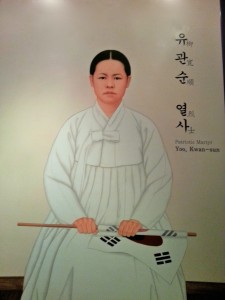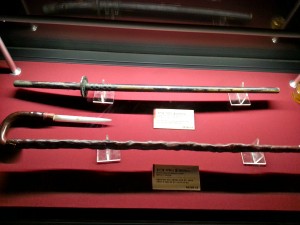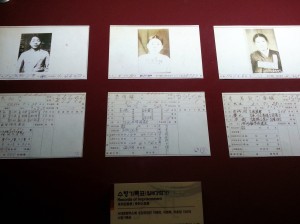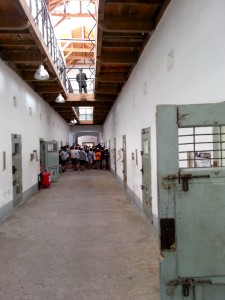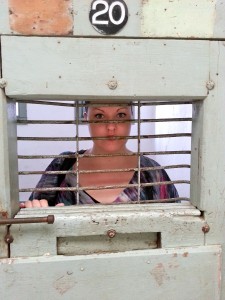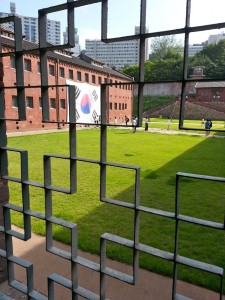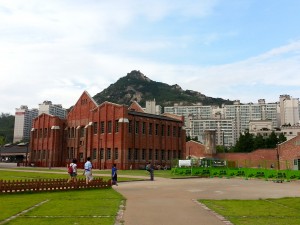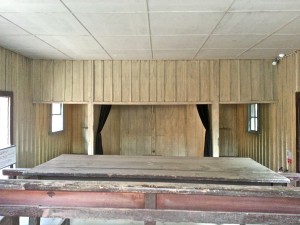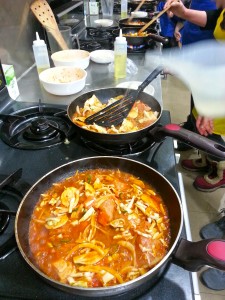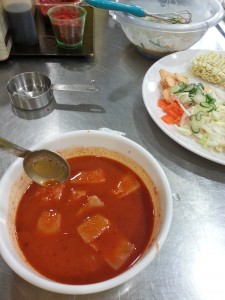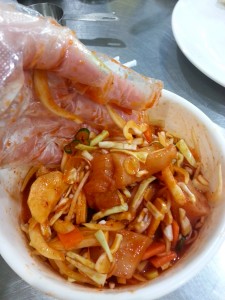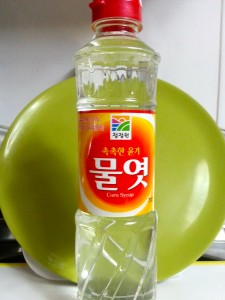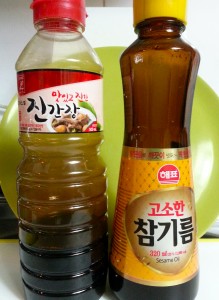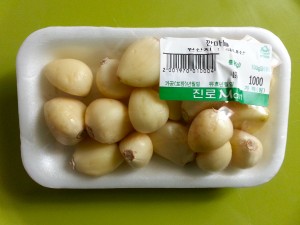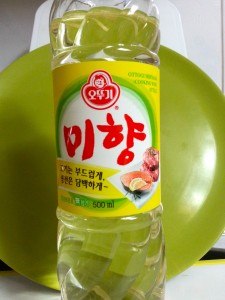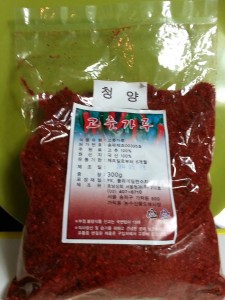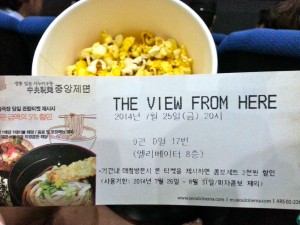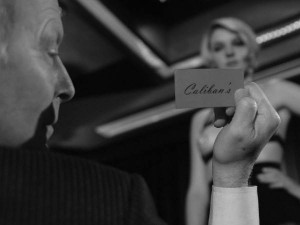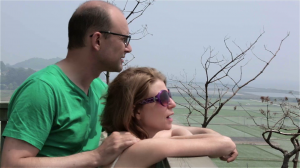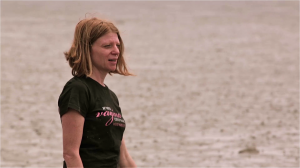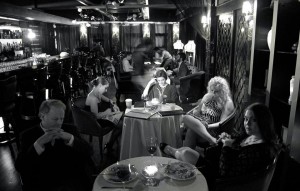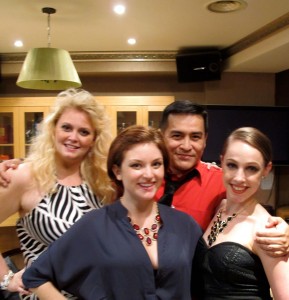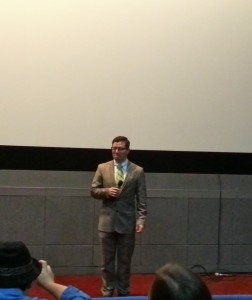My dear friend Pam was about to leave Korea so we decided to do some touristy things before she left. She chose to visit the Seodaemun Prison History Hall, which was a real prison, but is now a National Historic Relic of Korea (no.324). This prison was used by the Imperial Japanese Army during their occupation of Korea (1910-1945) and was used specifically to hold independence activists and those who rebelled against the Japanese rule.
The Seodaemun Prison was run by the Japanese until their surrender in August of 1945. Three months later it was renamed as Seoul Prison and returned to the hands of the Korean people. In February of 1988 the grounds were declared a National Historic Relic to honour and preserve the Korean people’s struggle for an independent nation. Ten years later in 1998 it officially re-opened as the Seodaemun Prison History Hall. In 2010 a lot of renovations were made and replicas were built, especially in the basement of the grounds where the torture chambers once were.
Today, these grounds are viewed as a symbol of Korea’s 80 year journey to freedom. It’s a dark park of Korea and Japan’s history, but it is history regardless and has become a place of pride for the freedom fighters who gave their lives. For younger generations who don’t understand war and the fight for liberty, this place is hugely educational for Koreans and people all over the world. Although the tour may leave visitors with a heavy heart, the historical importance, layout of the prison and information provided was well represented. I’ll let the photos tell the rest of the story from here.
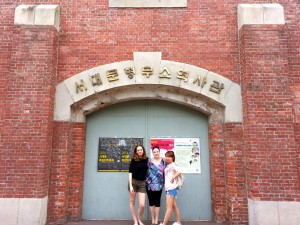
Mairi, myself and Pam, outside the prison walls where modern day media advertisements mark the doors.
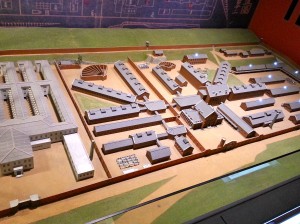
An overview of the prison grounds. The fan shaped structures are the exercise facilities for prisoners.
Below is a look at National Resistance Room 2, which is dedicated to the Koreans who were captured and died in the name of freedom. The walls are covered floor to ceiling with photos and records of over 5,000 men and women who gave their lives for an independent Korea.
The National Resistance Rooms (1-3) can be found on the second floor. Once the second floor had been seen, we were guided to the basement where the underground torture and interrogation chambers were. This is where things got heavy and at times, hard to breathe.
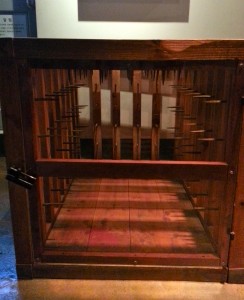
A torture box for prisoners. Once inside, captors would shake the box until the activists confessed.
Above, a typical cell where prisoners would be held while awaiting their interrogation. Below, another form of torture where the prisoners were kept in these boxes for hours, unable to fully stand up or sit down properly, causing extreme discomfort.
Once outside and back to street level, we were led to the prison buildings to see what life was like in an everyday cell.
Pictured below are some above ground solitary cells, with a space of less than 12 square feet. These rooms were made small to induce psychological and mental trauma.
From the prison buildings we went to the engineering work building, where prisoners were forced to labour for long hours in the prison. Inmates produced many goods, including textiles, bricks and military supplies. An example of forced labour on the prison grounds seen below. Some made the very bricks that held them captive. The bricks with embossments were made by the inmates of Seodaemun Prison (click photo to enlarge).
Outside we got to see other smaller buildings like the execution building, the leper’s building where the contagiously ill were taken and the exercise facilities.
This next photo was taken outside the execution building where the Wailing Poplar stands. This tree was planted in 1923 and has deep emotional ties to the Korean activists. Those about to be hanged were said to have run to the tree and cried out their frustrations at not achieving independence.
Myself, Mairi and Pam get a taste of the exercise facility below. To prevent communication between inmates, the exercise area was made into rows divided by stone walls and prisoners had to “exercise” separately.
Back towards the main hall, our last stop was the women’s prison. The original women’s prison was demolished in 1979. It was rebuilt in 2009 based on the original blueprint. It opened in April of 2013 as the exhibition hall. Inside the exhibition hall of women activists, was a small darkened room with mirrored walls as seen below. Glowing from walls are prison photos of the female activists over the 35 years of occupation.
As I mentioned, parts of this tour were hard on the soul as it was difficult to even begin to imagine what these people went through. That being said, I also found it inspiring to see what the human spirit can achieve, as the collective efforts of all these people and more, eventually led to Korea’s liberation from Japan in 1945. Soon after they had to deal with the Korean war from 1950-1953 and it wasn’t until then that Korea could really start to rebuild their identity and their nation. Korea has walked a long road to freedom and after seeing this place, I understand Korean pride a little bit better.
To get to Seodaemun Prison History Hall, take the subway to dongnimmun station on line 3 and go out exit #5. Admission is only 3,000 won (approx.$3) for adults and 1,500 won for teenagers and soldiers. Group discounts are also available for more than 20 people. Hours from March ~ October: 9:30-6pm. November ~ February: 9:30-5pm.
